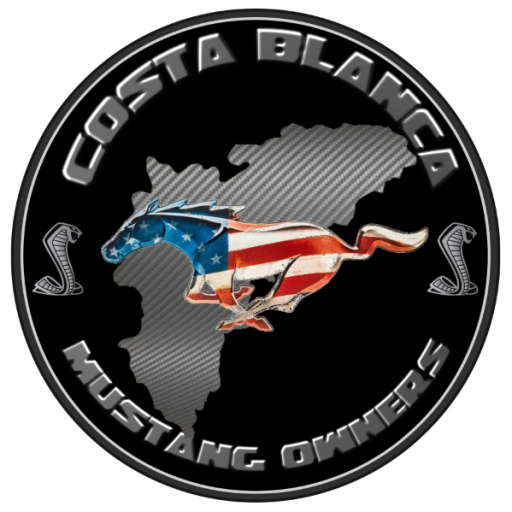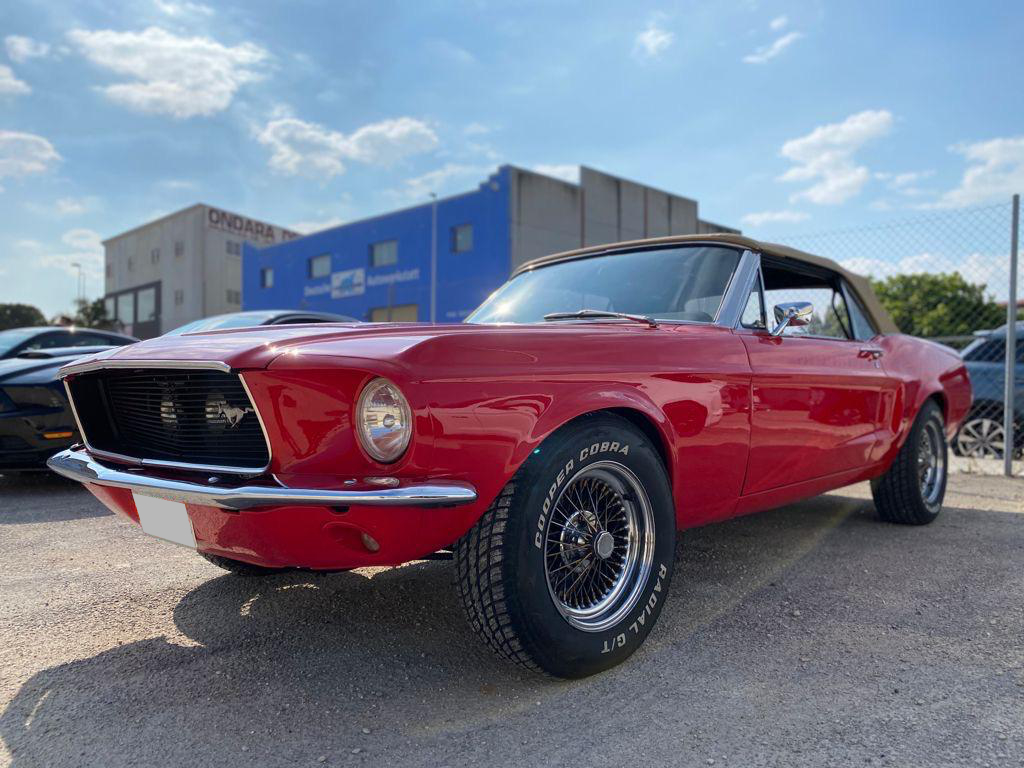Since its inception in the 1960s, the Mustang has been one of Ford’s most iconic cars. One of the key figures behind its creation was Lee Iacocca.
He started his career at Ford as an engineer in 1946, but soon moved into sales and marketing, where the results of his innovative ideas helped him rise through the ranks. By 1960 he was promoted to vice president and general manager of the Ford Division. In this role he was able to push through the concept of a stylish and affordable muscle car.
While the modern generations are popular on the Costa Blanca, we’re fortunate that many of the classics explored in this post have also made their way to our shores.
1960s: The Birth of a Legend
The first Ford Mustang debuted on April 17, 1964, at the New York World’s Fair. Marketed as a 1965 model, the original Mustang was based on the Ford Falcon platform. It came with a long hood, short rear deck, and multiple engine options.
It was an instant hit selling of 22,000 units on the first day and was further cemented as a cultural icon, especially after appearing in iconic movies like Peter Yates’ Bullitt in 1968.
- 1965–1966 – Introduction of GT package, Shelby GT350, and fastback body style. Carrol Shelby turned the Mustang into a track monster.
- 1967–1968 – The Mustang grew in size and power to compete with GM’s Camaro. Big-block V8s became available, including the 390 cu in engine.
- 1969–1970 – Introduction of performance models like:
- Mach 1
- Boss 302 & Boss 429
- More aggressive styling, quad headlights.
1970s: A Shift in Priorities
- 1971–1973 – Mustang continued to grow in size and weight. Performance models still available but were impacted by rising insurance costs and emissions regulations.
- 1974 – Launch of the Mustang II (1974–1978) during the oil crisis.
- Smaller, more fuel-efficient, based on the Pinto platform.
- Criticised for lacking performance but sold well due to its practicality.
1980s: Rebirth Through Fox Body
- 1979 – Introduction of the Fox-body Mustang (1979–1993).
- Lighter, more modern, and versatile platform.
- Various trims: GL, LX, GT, and Cobra.
- Popular with tuners and racers.
- 1982 – Return of the GT model with a 5.0L V8.
- 1987 – Major facelift with aerodynamic styling and better performance.
1990s: Refinement and Modernization
- 1994 – All-new SN95 Mustang on updated Fox platform.
- Rounded styling, better safety and handling.
- Base V6 and GT V8; Cobra with more performance.
- 1999 – “New Edge” styling introduced: sharper lines, modern updates.
2000s: Retro Revival
- 2015 – Sixth generation launched with a new global design.
- Independent rear suspension for the first time in all models.
- Turbocharged EcoBoost engine option added.
- Mustang became a global car, sold in Europe and Asia.
- 2018 – Facelifted design, improved engines, and 10-speed automatic introduced.
2010s: Global Mustang
- 2015 – Sixth generation launched with a new global design.
- Independent rear suspension for the first time in all models.
- Turbocharged EcoBoost engine option added.
- Mustang became a global car, sold in Europe and Asia.
- 2018 – Facelifted design, improved engines, and 10-speed automatic introduced.
2020s: Electrification and Expansion
- 2020 – Debut of the Mustang Mach-E, an all-electric crossover.
- Controversial use of the Mustang name, but strong sales.
- Represents Ford’s push toward electric performance vehicles.
- 2024 – Introduction of the seventh-generation Mustang (S650).
- Evolutionary design with digital cockpit.
- Offered in GT and new Dark Horse performance variants.
- Still features a manual transmission and V8 engine—rare in modern cars.
Legacy of the Mustang
Since its debut in 1964, the Ford Mustang has become a global icon. With over 10 million units produced, it holds the title of Ford’s longest continuously produced model. Its legacy extends far beyond the road, having impact on culture and motorsport, leading to global communities of enthusiasts.

